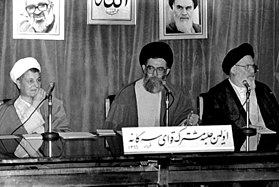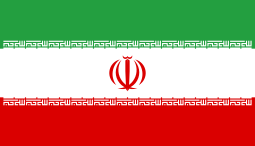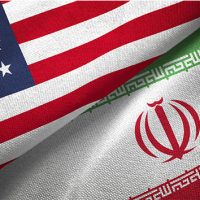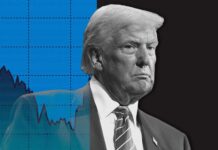Democracy vs. Democratic

Is Iran a Democracy? It seems like a straightforward question, yes or no. A democracy is a system of government by the whole population or all the eligible members of a state, typically through elected representatives. Is North Korea a democracy? No, one unelected man has total power. Voters vote for who they want to lead. For example, is the UK a democracy? Yes, they hold elections for people to represent them.
However, there is a different question within the latter example. The UK is supposed to be a democracy; the ideals are enshrined in their constitution; however, is the UK democratic? That’s a different question.
What’s the difference? Well, a country can be a democracy and have undemocratic institutions. High levels of corruption, election fraud, lobbying, and large corporate donations under the guise of Political Action Committees (PACs) are a few examples of things inherently undemocratic but do exist in democracies.
In America, lobbying groups fund politicians on both sides of the aisle. But what is lobbying? Lobbying is the act of attempting to influence the actions, policies, or decisions of officials, most often legislators or members of regulatory agencies.
Put, lobbying groups are catalysts for corporations to influence lawmakers, pushing for a policy that would assist the corporations. In the US, there are dozens of large corporations who participate in lobbying.
A Business Insider article from March 2019 named the twenty largest: Southern Company, Facebook, Lockheed Martin, NCTA: The Internet And Television Association, Bayer AG, National Association of Broadcasters, Northrop Grumman, Amazon, Comcast, Boeing, AT&T, American Medical Association, Alphabet Inc, Business Roundtable, Blue Cross Blue Shield, American Hospital Association, Pharmaceutical Research & Manufacturers of America, Open Society Policy Center, National Association of Realtors, and, finally, the US Chamber of Commerce.
Lobbying has a long history in US politics. For example, in 1976 and 1997, Disney lobbied Congress to extend the copyright expiration date so they could retain control of Mickey Mouse. In another case, in 1994, companies from the supplement industries lobbied Congress to allow supplements to circumvent FDA regulation, allowing these companies to put whatever they wanted in their products.
A Bit Of History

So, given the distinction between democracy and democratic, is Iran a democracy? Well, it’s complicated. To understand Iran today, you need to know a bit of Iran’s history. In the 1950s, Iran practiced a constitutional monarchy with the Shah, or monarch, as more of a symbol who had no real power.
Iran was once a democracy, and they had an election in 1951, electing Mohammad Mossadegh. In 1953, he attempted to nationalize Iran’s oil, putting all the oil under government control and expelling the oil companies. In response, the Central Intelligence Agency spawned a coup and overthrew the regime.
The US created an absolute dictatorship with the Shah now in complete control, forming a very undemocratic system. Over time, the Iranian populous became sick and tired of the Shah’s dictatorship and human rights transgressions, so in 1979 they overthrew him. They put in a new system of government, with the president and the supreme leader. Now I hear you saying, “Supreme Leader? That doesn’t sound like a democracy.”
And at first glance, I would agree with you, but there’s a bit more to it. Back in 1979, when Iran was reforming its government, the nation was devoutly conservative and religious, tired of not being able to choose their leaders. Due to this, the revolutionary leaders at the time wanted to make Iran into a mix between a theocracy, a kind of religious monarchy, and a democracy. This dichotomy created Iran’s government as we know it today. It’s important to note that the first Supreme Leader, Ayatollah Khomeini, and his regime, abused this system, committing human rights abuses on the same footing as the Shah including the murder of political opponents, torture, extra-judicial executions, and unjust imprisonment. These things have continued under the current Supreme Leader, especially against the minority Dervish peoples.
Iran’s Government, Today

So within Iran’s government structure, it all starts with the voters. The voters elect three components of the structure. Every four years, the people elect a president and the 290 members of parliament. Then, every eight years, the people elect the 86 members of the Assembly of Experts. Once elected, the president selects a 22 member cabinet who all have to be approved by the parliament.
The third elected part, the Assembly of Experts, chooses the Supreme Leader who serves till death and makes the final decision over all matters in the country. The Supreme Leader chooses the judges of the Judiciary branch of the government who each serve terms of five years. Also, the Supreme Leader acts as a religious figurehead and exercised absolute power, overriding any law that the other branches try to pass.
So is Iran a Democracy?

The Corruptions Perceptions Index which ranks countries “by their perceived levels of public sector corruption, as determined by expert assessments and opinion surveys.” For example, the United States ranked 22nd, making it one of the least corrupt countries. Iran, however, ranks 138 with vast economic corruption in the government tying especially to oil.
This corruption is such a huge problem that the Supreme Leader and President have both called it out, and the President promised to fight it wherever he can in the government. So the answer to the question “Is Iran a Democracy?” is a tricky one to find. In theory, inscribed in their constitution, they are a type of democracy. Are they a democratic country? In some ways, yes, in others, no.






